One of the most common questions asked by people, after you meet them and introduce yourself, is “what do you do?” Apart from being a conversation starter, your job title reflects a great deal about the responsibilities you shoulder.
Human Resource Executives have some specific, official responsibilities and many unsaid ones. The official tasks are clearly defined in the description of the job title but a Human Resource officer wears many hats in an organization like that of a motivator, mediator, counselor, and even an event planner!
Human Resource positions are broadly classified into 3 major parts:
- Entry-level HR positions These positions are open to fresh graduates to test the waters and begin their career in Human Resources. They include a great deal of administrative work like scheduling, coordinating, documenting, etc., and tend to have lower pay scales. However, they offer a lot of experience for the employee by observing HR processes, giving them the edge to move to the next level.
- Mid-level HR positions: : These are usually managerial positions that include goal-setting, planning, delegation, and supervising executives. They also coach and train their teams. However, some individual contributors like Recruiters, HR Consultants, and HR Specialists can also fall under this category.
- Senior-level HR positions: : These positions form the management of the organization. As the name suggests, they manage the functioning of any business – from setting bigger goals to leading the workforce toward the organization’s vision. They also take ownership of business outcomes.
There are also individual contributor roles in an organization that may be considered in mid-level or senior-level positions.
Today, the Human Resources department is an umbrella term that includes recruiting, administration, compensation and benefits, training, and employee relations. Each of these departments or teams has a hierarchy. Several organizations have levels in the hierarchy for better management.
15 Human Resource Job Titles and descriptions
Entry-level positions:
- HR Temp
This is a temporary position, possibly filling in for a full-time resource or a short-term project. HR temps are hired for employees who are on leave (sick and maternity), on sabbatical, under training, or on any other significant project. Temps hired can be offered a permanent position in case they perform well.
- HR Intern
Interns are usually students or new graduates who want to gain experience in HR to pursue a career in it. They handle administrative and assigned tasks and support other HR executives. Internships are shorter in duration – sometimes with a stipend but rarely a paid stint.
- HT Trainee
Trainees also provide support to other HR executives and are exposed to most aspects of HR. This is also a role that helps an employee learn a lot about various processes.
- HR Assistant
HR assistants help HR managers with everyday tasks. Some of their routine work includes administrative tasks, documentation of grievances, compensation, absences, terminations, and performance reviews. They may also be involved in recruitment and training new hires.
Mid-level positions:
- HR Manager
The HR Manager ensures the smooth functioning of the HR processes. They are responsible for the following:
- Planning and implementing hiring plans
- Review compensation and benefits
- Training and development
- Employee well-being
- Labor laws, regulations, and compliance
They also lead a team and supervise tasks for productivity and efficiency. The exact job role of the Human Resource Manager depends on the size of the team and the management of an organization.
Managers in other units like administration, payroll or training, etc. take care of the functioning of their respective departments. The Manager reports to the Director.
- HRIS Manager
The Human Resources Information System Manager takes care of an organization’s HR systems software. Their role needs them to record and process employee information, and maintain data integrity and compliance.
Senior-level positions:
- Director
As the term suggests, the Director makes the strategic plan of the management into actionable goals. They oversee the efficiency of Managers in a region or multiple locations. Organizations may have multiple Directors and director titles for different business units or departments viz. HR, Training, Payroll, etc. The Director reports to the Vice President.
- Vice President
The VP of organizations is responsible for planning the optimum utilization of talent for business outcomes. They are responsible for calculating the Return on Investment (RoI) of programs and services. There may be separate VPs for business units like HR, Talent Acquisition, Payroll, etc. The Vice President reports to the CHRO.
- Chief Human Resource Officer/ Chief People Officer
The CHRO or the CPO heads the entire HR team. Their job is to create company-wide strategies, ensure their implementation and oversee the entire workforce. Apart from maintaining business parameters, they are also responsible to oversee employee culture and satisfaction. They also represent the company brand in the market.
Individual Contributors:
- Recruiter
They fill vacancies within a company by selecting the right talent for the role. They may specialize in a certain field viz. technical, sales, diversity, etc. They may also be responsible for creating job descriptions.
- HR Generalist (HR Associate)
They are trained to take care of almost everything in HR like compensation, hiring, hiring logistics, handling employee relations, and even admin tasks. They are also involved in the administration of policies, procedures, and programs for a company.
- HR Specialist
They specialize in certain aspects, having worked in a role for more than a year. The main role is administration and payroll but they may be involved in employee assistance programs, employee screening, or onboarding. They may also have an idea of labor laws.
- HR Business Partner
They help in aligning the ‘people strategy’ with the ‘business strategy. They understand the management’s vision and implement a strategy that helps in the company’s success and employee satisfaction. They are also called Employee Relations Executives and deal with employees’ grievances and well-being.
- HR Analyst
They are responsible for analyzing data related to HR processes, issues, and costs within an organization. They usually use tools to manage HR data. Other data maintained by them are salary information, employee records, and employee productivity.
- HR Coordinator
They organize and schedule employee orientations, training, and related analytics. They keep track of attendance in these sessions, post-training assessment scores, and a part of employee productivity data. They may also be consulted while improving HR policies and processes.
Wrap Up
All the titles have two common responsibilities in their job role – achieve set business outcomes and maintain employee satisfaction.
As they progress up the hierarchy, the job responsibilities move from hands-on tasks to strategic planning. With experience and self-development, an employee will be able to move up the ladder.
Also read: Sustainability to safeguard the future of HR
Also read: A Green HRM Guide
Also read: Employee Engagement Strategies for HR Managers
FAQs on Human Resources Job Titles
Do all the job titles need to exist in an organization?
No. Job titles are flexible. Companies can choose unique job titles apart from the ones mentioned. Most companies prefer to keep job titles as per market standards.
Does a job title reflect the job role?
More often than not, a job title indicates what your responsibilities would be. However, HR being a huge field may bring in more opportunities and tasks. For example, some organizations expect recruiters to handle onboarding whereas others have HR Business Partners to do that. It is better to get a clear idea of the Job Description before choosing a job.
Is there a job role that is better than the others?
Every job needs you to have different skills. It depends on your aptitude and interest as to which role you are better suited for.
What are the 6 HR functions?
The prominent 6 HR functions are given below:
1. Employee Relations
2, Recruitment
3, Compensation & benefits
4. Performance Management
5. Learning & Development
6. Labor law compliance & training



